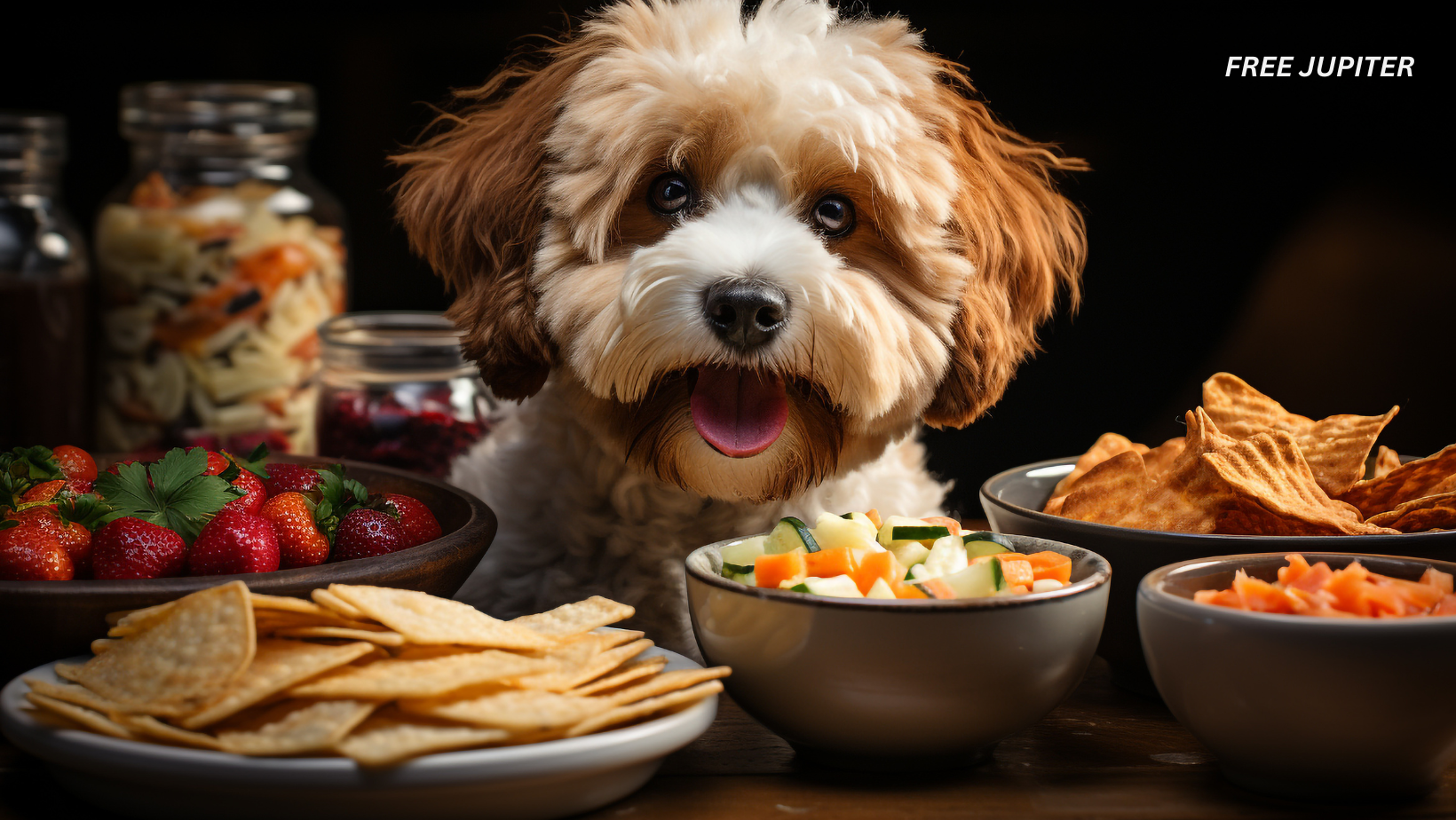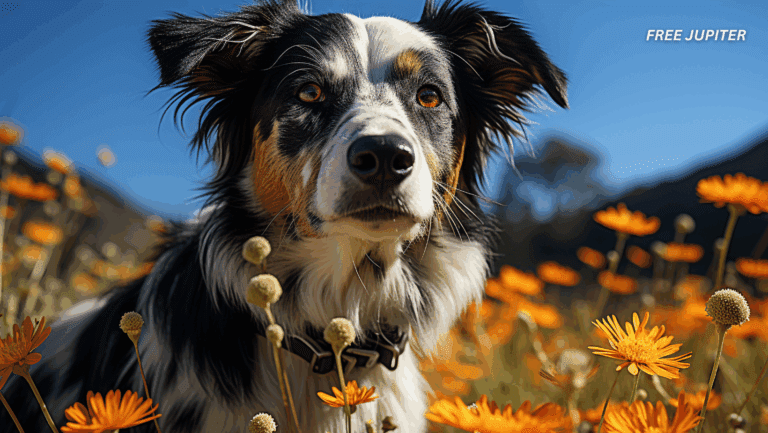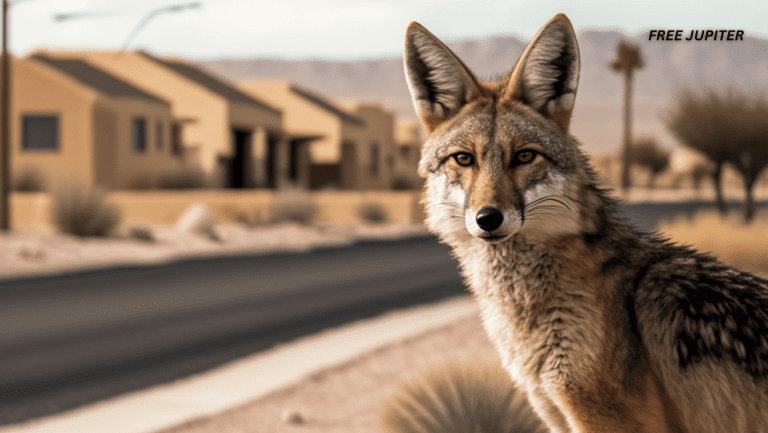Friendly Note: FreeJupiter.com shares general info for curious minds 🌟 Please fact-check all claims—and always check health matters with a professional 💙
Sharing daily life with a dog often means our canine friends are right by our side-whether we’re strolling through the park, lounging on the sofa, or enjoying a meal. It’s easy to assume that what’s safe for us is also safe for them. Yet, the reality is that many foods found in the average kitchen can be hazardous, or even deadly, to dogs. Some of these dangers are well-known, while others might surprise even the most attentive pet owners.
Why Dogs React Differently to Human Foods
Dogs aren’t just small humans in furry suits. Their bodies process food differently, and their metabolism is not equipped to handle many ingredients that we consume daily. Even foods that seem harmless or healthy to us can trigger severe reactions in dogs. Their smaller size and unique biology mean that even a small amount of certain foods can have outsized effects.
The Numbers Behind the Concern
In 2024, the ASPCA Animal Poison Control Center responded to over 451,000 calls about pets ingesting something potentially harmful. While chocolate and medications topped the list, many lesser-known foods also contributed to these emergencies, underscoring the importance of vigilance.
Recognizing the Signs of Food Poisoning in Dogs
Symptoms of food-related toxicity in dogs can range from mild to severe and may include:
- Vomiting and diarrhea
- Loss of appetite
- Lethargy or restlessness
- Disorientation or staggering
- Dilated pupils
- Abdominal pain
- Seizures
If you suspect your dog has eaten something dangerous, contact your veterinarian immediately. Do not attempt to induce vomiting unless specifically instructed by a professional, as this can sometimes worsen the situation.
Read more: Study Finds Popular Blood Pressure Medication Extends Lifespan and Slows Aging in Animal Models
30 Human Foods That Can Spell Trouble for Dogs
Below is a comprehensive guide to common foods that should never be shared with your canine companion. Some of these are household staples, while others might only appear occasionally-but all have the potential to cause harm.
1. Grapes, Raisins, Sultanas, and Currants
Even a handful of grapes or their dried counterparts can cause kidney failure in dogs. Early warning signs include vomiting, diarrhea, and lethargy. The toxin responsible is still unidentified, but the effects can be swift and severe.
2. Chocolate
Chocolate contains both caffeine and theobromine, which are highly toxic to dogs. Symptoms can include vomiting, diarrhea, rapid heartbeat, tremors, seizures, and, in severe cases, death. All forms of chocolate are dangerous, but dark chocolate and baking chocolate are especially potent.
3. Onions, Garlic, Chives, and Leeks
These vegetables, whether raw, cooked, or powdered, contain compounds that damage red blood cells, leading to anemia. Signs of poisoning may not appear immediately but can include weakness, pale gums, and breathing difficulties.
4. Avocado
Avocado contains persin, a substance that can cause vomiting and diarrhea in dogs. While dogs are less sensitive to persin than some other animals, the high fat content can also trigger pancreatitis. The large pit poses a choking hazard as well.
5. Macadamia Nuts
Macadamia nuts can cause weakness, vomiting, tremors, and fever in dogs. The exact toxin is unknown, but even small amounts can lead to symptoms. Fortunately, most dogs recover with supportive care.
6. Xylitol
This sugar substitute, found in sugar-free gum, baked goods, and some peanut butters, can cause a rapid drop in blood sugar, seizures, and liver failure. Symptoms can appear within an hour of ingestion and may be fatal if not treated promptly.
7. Alcohol
Alcoholic drinks and foods containing alcohol can depress the nervous system, causing vomiting, diarrhea, difficulty breathing, coma, and even death. Even small amounts can be dangerous due to dogs’ smaller size and different metabolism.
8. Coffee, Tea, and Caffeinated Products
Caffeine is a powerful stimulant that can cause restlessness, rapid breathing, heart palpitations, muscle tremors, and seizures in dogs. Caffeine is found in coffee, tea, energy drinks, and some cold medications.
Read more: The Mental and Physical Health Benefits of Owning a Cat
9. Milk and Dairy Products
Most dogs are lactose intolerant, so milk and cheese can lead to digestive upset, including diarrhea and cramps. While not usually life-threatening, these symptoms can be uncomfortable and persistent.
10. Fatty Foods and Trimmings
Foods high in fat, such as bacon, sausage, or leftover meat trimmings, can cause pancreatitis-a painful and potentially life-threatening inflammation of the pancreas. Signs include vomiting, abdominal pain, and lethargy.
11. Yeast Dough
Unbaked dough can expand in a dog’s stomach, leading to bloating and potentially dangerous twisting of the stomach. The fermentation process also produces alcohol, adding another layer of risk.
12. Wild Mushrooms
Many wild mushrooms are toxic to dogs and can cause vomiting, diarrhea, seizures, and organ failure. It’s safest to keep dogs away from all mushrooms growing outdoors.
13. Green Tomatoes and Potatoes
Both contain solanine, a substance that can cause gastrointestinal distress, confusion, and heart problems in dogs. Cooking reduces solanine levels, but it’s best to avoid sharing these foods altogether.
14. Starfruit
Starfruit contains oxalates, which can cause kidney damage in dogs, especially those with pre-existing kidney issues. Symptoms include drooling, vomiting, and weakness.
15. Apples, Cherries, and Peaches (Pits and Seeds)
While the flesh of these fruits is generally safe, the pits and seeds contain cyanogenic glycosides, which can release cyanide when chewed. This can cause difficulty breathing, shock, and even death.
16. Mustard and Nutmeg
Both can irritate a dog’s digestive system. Nutmeg, in particular, contains myristicin, which can cause hallucinations, increased heart rate, and seizures in large quantities.
17. Rhubarb
Rhubarb leaves contain oxalates, which can lead to drooling, tremors, and kidney failure in dogs.
18. Cat Food
Cat food is formulated for felines and is too high in protein and fat for dogs. Regular consumption can lead to gastrointestinal upset and, over time, nutritional imbalances.
19. Spinach
Spinach contains oxalic acid, which can interfere with a dog’s ability to absorb calcium and may cause kidney damage with regular consumption.
20. Black Walnuts
These nuts can cause tremors and seizures in dogs. Moldy walnuts are especially dangerous, as they can harbor toxins produced by fungi.
21. Iron Supplements
Iron is toxic to dogs in high doses and can cause vomiting, diarrhea, and damage to the liver and kidneys.
22. Currants
Like grapes and raisins, currants can cause kidney failure in dogs.
23. Chives
Chives, like onions and garlic, contain compounds that can damage red blood cells and lead to anemia.
24. Fat Trimmings
Extra fat from meats can cause pancreatitis, a painful and potentially fatal condition.
25. Coffee Grounds
Even small amounts of coffee grounds can be dangerous due to their high caffeine content.
26. Leeks
Leeks belong to the same family as onions and garlic and carry similar risks for dogs.
27. Wild Mushrooms
Some wild mushrooms are highly toxic and can cause severe reactions, including organ failure.
28. Potato (Raw or Green)
Raw or green potatoes contain solanine, which is toxic to dogs.
29. Citrus Oil
Citrus oil extracts, found in some flavorings and essential oils, can cause vomiting and depression in dogs.
30. Bread Dough
Uncooked bread dough can expand in the stomach and produce alcohol, both of which are dangerous.
Read more: Having A Cat Is Linked To A Lower Risk Of Having Heart Attacks
What To Do If Your Dog Eats Something Dangerous
- Stay calm and quickly assess the situation.
- Contact your veterinarian or an emergency animal clinic immediately.
- Do not induce vomiting unless instructed by a professional, as some substances can cause more harm if brought back up.
- Keep important numbers-including your vet and the ASPCA Animal Poison Control Center (888-426-4435)-readily available.
Prevention: The Best Medicine
While accidents happen, the easiest way to protect your dog is to keep dangerous foods out of reach. Be mindful during meal prep and clean up thoroughly after eating. If you have children, teach them not to share their snacks with the family dog.
Final Thoughts
It’s tempting to let your dog sample your food, especially when they look up at you with those pleading eyes. But keeping certain foods off their menu is one of the simplest ways to ensure a long, healthy life for your four-legged friend. When in doubt, stick to treats and foods made specifically for dogs, and consult your veterinarian if you’re ever unsure about what’s safe.
By staying informed and vigilant, you can help your dog avoid a trip to the vet-and keep those tails wagging for years to come.









